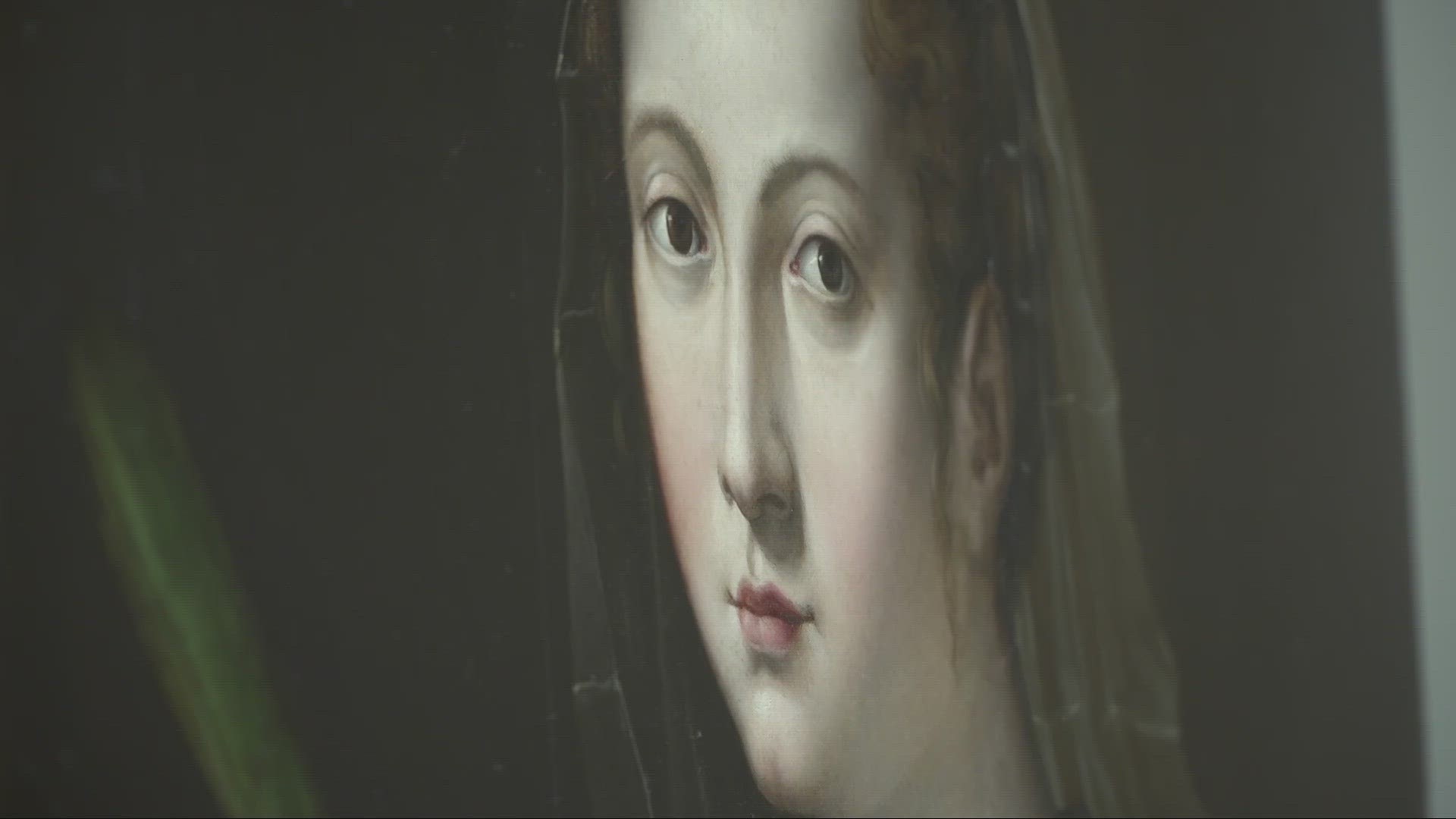CLEVELAND — We have a follow up to a Growing STEM story we featured about a month or so ago on the role of conservators at the Cleveland Museum of Art. It's a role that produces great careers in STEM, combining a love of art, with science and math.
After our original story aired about how the museum uses technology to preserve and conserve art, Christi Paul and Jay Crawford brought up the question if that is something the artist would want, keeping ethics in mind.
In fact, everything conservators do is rooted in the American Institute for Conservation's Code of Ethics.
Take, for example, "Portrait of a Woman as St. Catherine." Attributed to Italian artist Pier Francesco Foschi, the painting dates back to the 16th century. For the past year, it's been moved into the conservation studio.
"The painting was in dire need of conservation treatment, and it's been wonderful to actually remove those layers for the first time and really reveal a painting that hopefully is closer to the artist's intent," said Assistant Conservator of Paintings Julianna Ly.
The first tenet, in the code of ethics, is that anything done to preserve or conserve a work of art, must be able to be "undone."
"So I am just one point along this painting's lifetime. And in the future, maybe in a hundred years, if what I do to this painting, might need to be reversed, a future conservator can do that without harming the original," said Ly.
A side by side comparison shows what the painting looked like "before" and how it looks today, after the careful removal of thick, yellowed varnish.
"Our goal is never to make the painting look brand new or to make it look like it just came off the artist's studio easel. But it's really to allow these damages and maybe these past interventions to really fall behind and to really let the viewer appreciate the work," Ly explained.
Another key principal - documentation: written and photographic.
Extensive information about the painting, artist - and everything that's happened to it along the way.
So I was able to read past treatment records on this painting before I started. And so I knew the materials that were applied and I knew how long it had been since the painting had been treated," Ly shared.
Lastly - artists' intent. A difficult job when the artist or sculptor lived in the 16th century. But there is a process.
Difficult when a painter or sculptor lived in the 16th century.
"We often do this alongside kind of conversations with our curatorial colleagues who are really experts in kind of the artists in this time period. And they can also help us kind of make those decisions when necessary," said Ly.
When possible, curators will reach out to living artists, like Firelei Baez, whose untitled oil and acrylic is part of the museum's collection.
We are fortunate that the CMA collects a lot of beautiful contemporary paintings. And when that happens, we're able to conduct artist interviews and that allows us to talk directly with living artists about what, what their intentions are, how do they want their paintings to live on, do they want them to be conserved?

